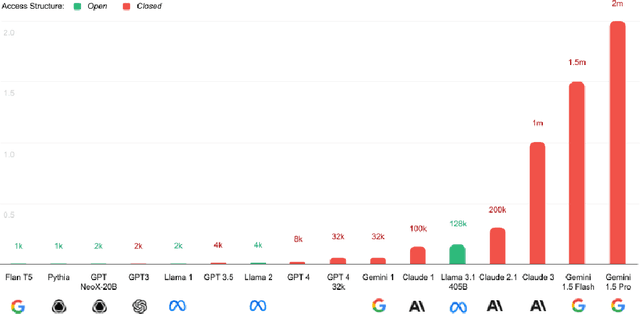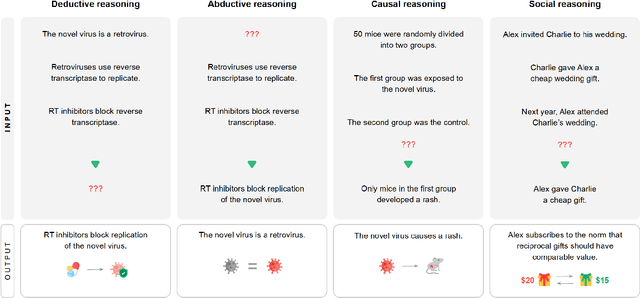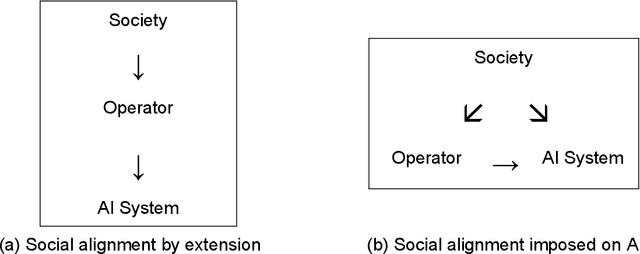Anton Korinek
Foundational Challenges in Assuring Alignment and Safety of Large Language Models
Apr 15, 2024



Abstract:This work identifies 18 foundational challenges in assuring the alignment and safety of large language models (LLMs). These challenges are organized into three different categories: scientific understanding of LLMs, development and deployment methods, and sociotechnical challenges. Based on the identified challenges, we pose $200+$ concrete research questions.
Scenarios for the Transition to AGI
Mar 17, 2024



Abstract:We analyze how output and wages behave under different scenarios for technological progress that may culminate in Artificial General Intelligence (AGI), defined as the ability of AI systems to perform all tasks that humans can perform. We assume that human work can be decomposed into atomistic tasks that differ in their complexity. Advances in technology make ever more complex tasks amenable to automation. The effects on wages depend on a race between automation and capital accumulation. If the distribution of task complexity exhibits a sufficiently thick infinite tail, then there is always enough work for humans, and wages may rise forever. By contrast, if the complexity of tasks that humans can perform is bounded and full automation is reached, then wages collapse. But declines may occur even before if large-scale automation outpaces capital accumulation and makes labor too abundant. Automating productivity growth may lead to broad-based gains in the returns to all factors. By contrast, bottlenecks to growth from irreproducible scarce factors may exacerbate the decline in wages.
Market Concentration Implications of Foundation Models
Nov 02, 2023Abstract:We analyze the structure of the market for foundation models, i.e., large AI models such as those that power ChatGPT and that are adaptable to downstream uses, and we examine the implications for competition policy and regulation. We observe that the most capable models will have a tendency towards natural monopoly and may have potentially vast markets. This calls for a two-pronged regulatory response: (i) Antitrust authorities need to ensure the contestability of the market by tackling strategic behavior, in particular by ensuring that monopolies do not propagate vertically to downstream uses, and (ii) given the diminished potential for market discipline, there is a role for regulators to ensure that the most capable models meet sufficient quality standards (including safety, privacy, non-discrimination, reliability and interoperability standards) to maximally contribute to social welfare. Regulators should also ensure a level regulatory playing field between AI and non-AI applications in all sectors of the economy. For models that are behind the frontier, we expect competition to be quite intense, implying a more limited role for competition policy, although a role for regulation remains.
Frontier AI Regulation: Managing Emerging Risks to Public Safety
Jul 11, 2023Abstract:Advanced AI models hold the promise of tremendous benefits for humanity, but society needs to proactively manage the accompanying risks. In this paper, we focus on what we term "frontier AI" models: highly capable foundation models that could possess dangerous capabilities sufficient to pose severe risks to public safety. Frontier AI models pose a distinct regulatory challenge: dangerous capabilities can arise unexpectedly; it is difficult to robustly prevent a deployed model from being misused; and, it is difficult to stop a model's capabilities from proliferating broadly. To address these challenges, at least three building blocks for the regulation of frontier models are needed: (1) standard-setting processes to identify appropriate requirements for frontier AI developers, (2) registration and reporting requirements to provide regulators with visibility into frontier AI development processes, and (3) mechanisms to ensure compliance with safety standards for the development and deployment of frontier AI models. Industry self-regulation is an important first step. However, wider societal discussions and government intervention will be needed to create standards and to ensure compliance with them. We consider several options to this end, including granting enforcement powers to supervisory authorities and licensure regimes for frontier AI models. Finally, we propose an initial set of safety standards. These include conducting pre-deployment risk assessments; external scrutiny of model behavior; using risk assessments to inform deployment decisions; and monitoring and responding to new information about model capabilities and uses post-deployment. We hope this discussion contributes to the broader conversation on how to balance public safety risks and innovation benefits from advances at the frontier of AI development.
Aligned with Whom? Direct and social goals for AI systems
May 09, 2022

Abstract:As artificial intelligence (AI) becomes more powerful and widespread, the AI alignment problem - how to ensure that AI systems pursue the goals that we want them to pursue - has garnered growing attention. This article distinguishes two types of alignment problems depending on whose goals we consider, and analyzes the different solutions necessitated by each. The direct alignment problem considers whether an AI system accomplishes the goals of the entity operating it. In contrast, the social alignment problem considers the effects of an AI system on larger groups or on society more broadly. In particular, it also considers whether the system imposes externalities on others. Whereas solutions to the direct alignment problem center around more robust implementation, social alignment problems typically arise because of conflicts between individual and group-level goals, elevating the importance of AI governance to mediate such conflicts. Addressing the social alignment problem requires both enforcing existing norms on their developers and operators and designing new norms that apply directly to AI systems.
AI and Shared Prosperity
May 18, 2021Abstract:Future advances in AI that automate away human labor may have stark implications for labor markets and inequality. This paper proposes a framework to analyze the effects of specific types of AI systems on the labor market, based on how much labor demand they will create versus displace, while taking into account that productivity gains also make society wealthier and thereby contribute to additional labor demand. This analysis enables ethically-minded companies creating or deploying AI systems as well as researchers and policymakers to take into account the effects of their actions on labor markets and inequality, and therefore to steer progress in AI in a direction that advances shared prosperity and an inclusive economic future for all of humanity.
 Add to Chrome
Add to Chrome Add to Firefox
Add to Firefox Add to Edge
Add to Edge